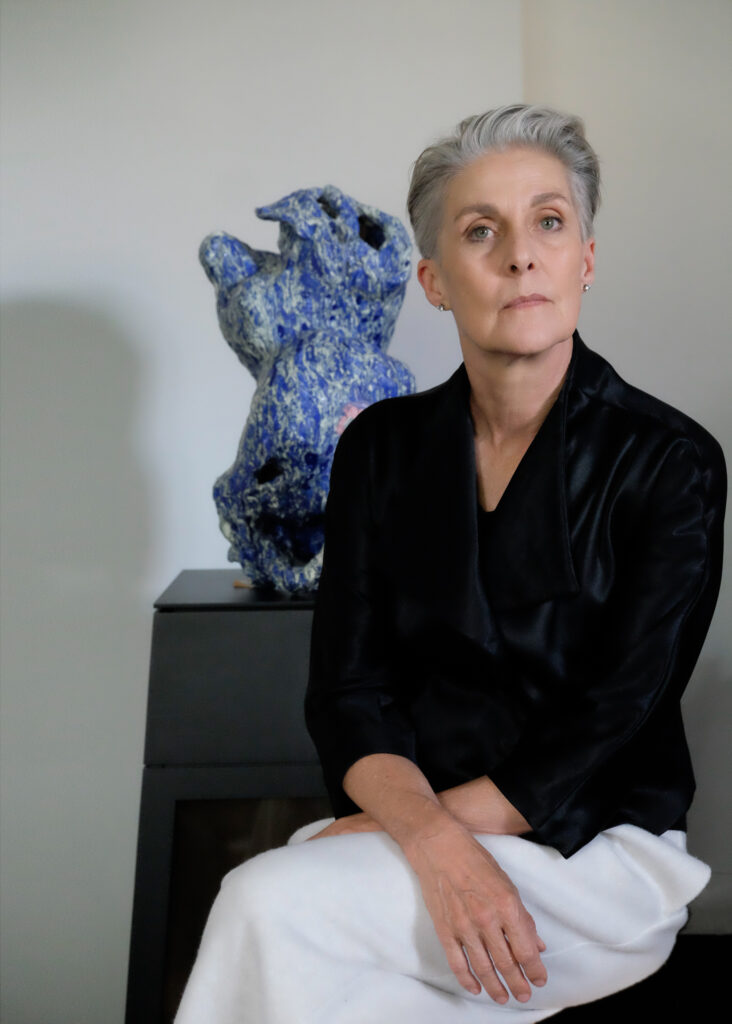
Foto: D. M. Würgert
Iris Winkelmeyer
Founder, a.ex studio – Care and Conservation of Contemporary and Modern Art, Munich
In 2022, Iris Winkelmeyer established a.ex studio – Care and Conservation of Contemporary and Modern Art in Munich, Germany.
Her professional formation began with diploma programmes in London and Stuttgart, where she specialised early on in the conservation and restoration of modern and contemporary art. During her studies, she completed internships in several internationally renowned conservation studios, including the Museum of Modern Art (New York), the Museum of Modern Art Frankfurt (MMK), the Menil Collection (Houston), the Museum Boijmans Van Beuningen (Rotterdam), the Staatsgalerie Stuttgart, and the Atelier A. Hoffmeister-zur Nedden (Bremen).
For eighteen years, Iris headed the conservation studio of the Städtische Galerie im Lenbachhaus und Kunstbau München, where she led significant projects dedicated to modern and contemporary works.
At the core of her practice are probing questions of a work’s integrity, material constitution, and its art-historical and technical context. For Iris, these dimensions are not simply technical concerns, but foundational for any act of restoration, conservation, or reconstruction. Particularly in the realm of contemporary art, such processes often demand unconventional strategies and new methodologies, ones that move beyond the confines of established conservation canons.
She is especially drawn to complex interventions such as the reconstruction of faded colour passages in artworks from the 20th and 21st centuries—tasks that demand both material sensitivity and historical insight.
In select cases, the creation of an exhibition copy may itself become a conservation strategy. In this field, a.ex studio collaborates with international artists, artist estates, and specialist practitioners, forming a dynamic nexus of care, interpretation, and technical experimentation.
An equally vital strand of her work concerns the preservation of classical modernism, in particular the artistic legacy of the Blaue Reiter collective. During her tenure at the Lenbachhaus, Iris made enduring contributions to the study of the group’s painting techniques and artistic methods—most notably through her acclaimed publication ‚Franz Marc’s Prism‘ (see Publications).
Find current project insights via Instagram #a.exstudio
Im Jahr 2022 gründete Iris Winkelmeyer a.ex studio – Care and Conservation of Contemporary and Modern Art in München.
Iris absolvierte zunächst im Zuge ihrer Ausbildung Diplomstudiengänge in London und Stuttgart, wobei sie sich früh auf die Restaurierung und Erhalt moderner Kunst fokussierte. Während ihrer Studien volontierte sie in mehreren Restaurierungsateliers, darunter das MoMA, New York, das MMK in Frankfurt am Main, die Menil Collection, Houston, das Museum Boijmans van Beuningen, Rotterdam, die Staatsgalerie Stuttgart und das Atelier A. Hoffmeister-zur Nedden, Bremen. Zuletzt leitete sie achtzehn Jahre das Restaurierungsatelier der Städtischen Galerie im Lenbachhaus und Kunstbau München.
Fragen nach der Integrität eines Werkes, seinen Materialien, seinem kunsthistorischen und kunsttechnologischen Kontext sind für Iris elementare Voraussetzungen jeder Restaurierung, Konservierung oder Rekonstruktion. Insbesondere Maßnahmen an Werken zeitgenössischer Kunst erfordern oft unkonventionelle Wege und neue Methoden jenseits des erprobten Kanons. Komplexe Fragestellungen wie beispielsweise die Rekonstruktion verblichener Farbpartien auf Werken des 20./21. Jahrhunderts interessieren sie daher besonders.
In bestimmten Fällen kann auch die Herstellung einer Ausstellungskopie eine Erhaltungsstrategie darstellen. Auf diesem Gebiet arbeitet a.ex studio mit internationalen Künstler*innen, Estates und Spezialist*innen zusammen.
Ein weiterer ebenso wichtiger Arbeitsbereich ihres Ateliers ist die Konservierung/Restaurierung der sogenannten klassischen Moderne, insbesondere der Künstlergruppe Blauer Reiter. Während ihrer Zeit im Lenbachhaus hat sie kontinuierlich zur Erforschung der Maltechnik und der künstlerischen Methoden dieser modernistischen Gruppe insbesondere mit ihrem Buch „Franz Marcs Prisma“ (siehe Publications) beigetragen.
Aktuelle Projekte auf instagram #a.exstudio